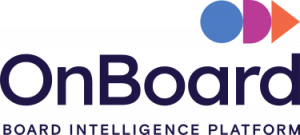What is Neuroinclusion and Why is it Important to Your Association?

Diversity, equity, and inclusion have become important to Canadian associations, as it has for most organizations in the rest of the world. That being said, the term “neuroinclusion” is relatively new and not that well understood.
Neuroinclusion is often connected to invisible disability, although it has a few distinct differences which we will discuss later. At its heart, it’s about welcoming and integrating neurodivergent people. Neurodivergent people have brains that are wired differently than those of the majority (referred to as neurotypical).
The concept of neurodiversity
Australian sociologist Judy Singer coined the term “neurodiversity” in 1999 as a way to describe the natural variation in the human brain. It also reflects the different ways individuals think, process information, and experience the world.
Fifteen to twenty percent of the world’s population have a spectrum of brain characteristics that are different enough from the majority. These differences are referred to as neurodivergence, and often cause misunderstandings and challenges.
Areas of neurodivergence include learning differences (once called learning disabilities), ADHD, the autism spectrum, and more. They’re generally referred to as a “spectrum” because the characteristics present themselves in differing degrees from person to person. Because of this, many people with milder neurodivergent characteristics are often undiagnosed. They just know they think or act differently than others.
Neurodivergent characteristics
“Neurodivergent” isn’t a medical term, condition, or diagnosis. People who are neurodivergent simply have key differences in the way their brain works. That means people with very different signs and symptoms can still have the same diagnosis.
Because people experience neurodivergence on a spectrum, it’s important to note that not all characteristics are shared. When they do appear, they will be of varying intensity. Here are a few of the most common.
Learning Differences
These can affect a person’s ability to read, understand numbers, or use fine motor skills. Some neurodivergent conditions make these challenging for the person. But other conditions can have the opposite effect, giving people extraordinary abilities in these areas.
Sensitivity to Stimuli
Too much stimulation, such as light, sound, touch or smell, can easily overwhelm some people.
Social differences
Body language, social cues and nonverbal communication may be more challenging as these areas of communication are often ill-defined and open to interpretation.
Special Interests
Neurodivergent individuals often develop intense interests or hobbies in specific subjects.
Is Neurodivergence a Disability?
The question of whether neurodivergence is a disability or not depends on your point of view. Neurodivergent people are as capable as others but they often work in challenging environments. The tools and systems not be optimized to how they think, interact with people or process information. So, much like people with other disabilities, they often need accommodations to thrive both personally and professionally.
Understanding Terms: Neurodivergence, Neurodiversity, and Neuroinclusion
If a single person can be “neurodivergent”, a team of people can be “neurodiverse” – meaning some are neurotypical while others have neurodivergent characteristics. Neurodiversity, like all forms of diversity, can be beneficial for teams, as different ways of thinking offer different strengths and insights.
“Neuroinclusion” refers to having a plan that welcomes and accommodates neurodiversity.
Why is Neuroinclusion Important for Your Association?
Associations, like all organizations, are made up of people. We must accept the reality of neurodiversity, with up to 20 percent of the global population estimated to be neurodivergent. As the world becomes more aware of neurodivergence, more people will identify with these characteristics. They will expect the organizations that serve them to be aware of them, too.
This is particularly important in terms of recruitment. Organizations everywhere are having difficulties finding good candidates for their positions. According to the University of Connecticut, unemployment for neurodivergent adults sits at 30-40 per cent. This is three times the rate for people with other disabilities and eight times the rate for people without disabilities. For those with autism, the employment picture is worse. According to the Public Health Agency of Canada, in 2017, just 33 per cent of Canadian adults with autism reported having a job compared to 79 per cent of adults without a disability. These are educated and otherwise able people who have both skills and insightful perspectives that your organization needs.
It’s also important to remember that your organization likely has neurodivergent employees already. As with many invisible disabilities, people who are neurodivergent can and often do mask their characteristics to fit in. As you can imagine, these employees will often feel “left out” feeling their needs unrecognized or considered unimportant. This is not an ideal situation for either retention or team dynamics. By showing you welcome their differences, you will get them to stay longer and perform better.
The Power of Neurodiverse Teams
Without optimizing for neuroinclusion, your existing workforce may be operating far below their actual potential. An Australian study has shown that some neurodiverse teams are 30 per cent more productive than strictly neurotypical teams. They also make fewer errors overall.
Having a wide range of neurodiversity on your teams can bring many benefits including:
- Diverse perspectives: Neurodivergent individuals often have unique ways of approaching problems, thinking creatively, and solving complex tasks.
- Enhanced problem identification and problem-solving: Neurodivergent individuals often possess a keen eye for detail and may notice patterns or anomalies that others might overlook.
- Increased adaptability and flexibility: Neurodivergent individuals often exhibit a high degree of adaptability and come up with unconventional solutions.
- Improved collaboration: Neurodiverse perspectives and ways of thinking can encourage others to consider alternative viewpoints and embrace different approaches.
Developing a Neuroinclusion Plan
Awareness, communication and accommodation are all keys to developing a neuroinclusive workplace. Associations can begin to reap the rewards of neuroinclusion by creating a plan that integrates these concepts and puts them into practice.
A great first step is to join us for our session “Embracing Neurodiversity in The Workplace and How to Talk About It” at the 2023 CSAE Summer Summit in Mississauga.





















